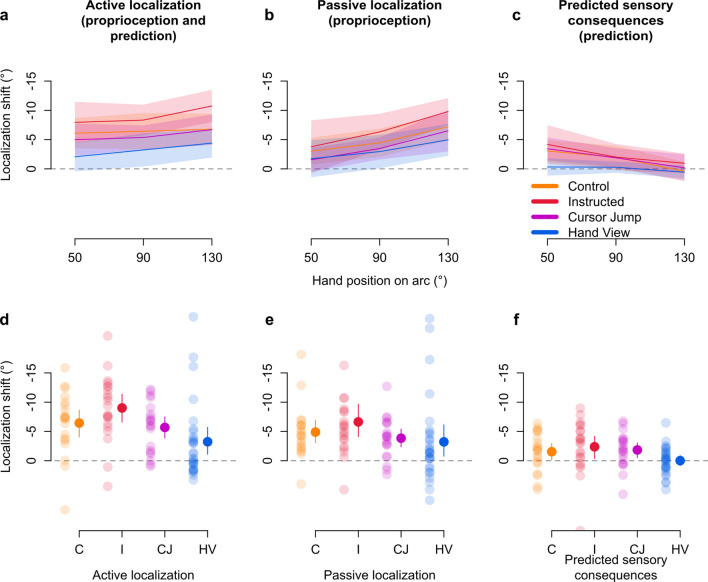Figure 6.
Afferent and efferent-based changes in hand location estimates. During localization trials, the arc stimulus is presented and participants either move, or are moved, towards different points on the arc. Shifts in localizing the unseen right hand following adaptation training after (a) self-generated movements (active localization), (b) robot-generated movements (passive localization), and (c) the difference between active and passive localization as a measure of updates in efferent-based estimates (predicted sensory consequences). Grey dashed line at the 0° mark indicates the absence of shifts, while positive and negative values indicate the direction of shifts. Solid lines correspond to group means at each of three hand positions on the arc, which mark the position in polar coordinates of where the arc stimuli are centred on during these trials. These positions closely match the target locations during adaptation training and no-cursor reaches. Shaded regions are corresponding 95% confidence intervals. (d–f) Individual participant data for shifts in hand localization are shown in transparent dots, separated according to group and movement type. Solid dots and error bars to the side of individual data correspond to group means and bootstrapped 95% confidence intervals.

